Editor’s Note: This is the third in a three-part series discussing faith and religious participation in rural America. The explorative series, titled Religion in the Heartland. is an AGDAILY exclusive.
It’s an autumn afternoon as I prepare this third installment of our series, Religion in the Heartland, amid much irony. A writer and small farm owner, I’ll be delivering a lay message Sunday at my church titled, “In Defense of God’s Mercy,” based on the 32nd chapter of Exodus and the 23rd Psalm. It’s the church in which I was raised and happens to be a small United Methodist Church (UMC) located at the junction of Indiana State Road 42 and Clay County Road 25 West. Like most spots in rural America, not many folks know the community by name, but it’s on the map, nonetheless. You can look it up: Prairie City, Clay County, Indiana, USA.
As anyone following the issues of church and state these days knows, the United Methodist Church is amidst a disaffiliation shuffle with more than 6,000 individual churches, or 20 percent, having left the denomination since 2019. Some have chosen to join a new group called the Global Methodists, others meanwhile are becoming independent churches. This has ostensibly been due to the debate concerning same-sex unions and other LGBTQ+ issues, but frankly I just don’t think it’s that simple. And for that reason, I’m not quaking in my Laredos at the assertion that religion is doomed in the America, let alone rural America.
About 70 percent of America identifies as Christian these days, and yes that’s down from the 90 percent in the 1990s, but as the federal census proves out, the population has grown in such a dynamic fashion since then there’s actually more Christians today than before. But the number of people willing to identify as a member of an organized religion hasn’t kept up with the population growth percentagewise. What’s interesting is that the ranks of atheists haven’t moved, just those termed “unaffiliated,” meaning they’re presently non-participants.
During the same time period, we’ve also witnessed a similar decline in group affiliation across all boards, from union membership to local charities and clubs. Again, there’s not a disavowal of the causes, just a disassociation from group participation.
The fact is, Americans today are more inclined to associate virtually in online communities than in-person, and here in Clay County, we’ve been watching the children and grandchildren of our neighbors move away for two generations. And yet, they all congregate daily on social media.
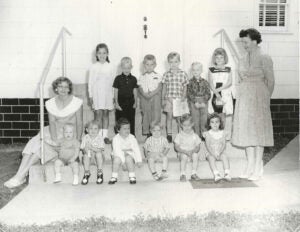
But what’s going on in churches today, and why are so many shrinking or closing their doors? It’s certainly a topic of national interest. On the surface, I’d say the equation involves the three Ps: preachers, property, and politics. At least that’s my take on what’s really driving the present UMC struggle.
But deeper down lies a much more interesting circle of life, and much like spring planting leads to an autumn harvest, with a cold winter and hot summer in between, I see the story of Prairie City UMC as a microcosm of the larger phenomenon at hand.
Preachers in the prairie
Prairie City was founded in 1869, 40 years after Clay County was mandated into existence by the Indiana State Legislature. According to our own church history, the origins of not only our congregation, but rather the cluster of small churches nearby, began when Rev. Amos Hedge (1796-1874) began organizing services as a United Brethren minister in 1837.
My great-great-great-grandfather, Darlington Boys (or Boyce depending on the year and record) would have been about 19 at the time. Like many early Clay County residents, he had come here from Clermont, Ohio. That community of local farmers and settlers would eventually begin holding services in one-room schoolhouses and homes, until in August of 1896, Rev. T.D. Spyker organized the Prairie City Evangelical United Brethren Church with eight founding members.
Our present church building was finished in 1899 for the cost of $2,500. Even before the building was up though, the congregation numbered 40 by 1898, and eventually 89 in 1953. In 1968 the Evangelical United Brethren (EUB) merged with the Methodist Church to become the United Methodist Church. And that’s a trend you’ll see not just throughout history, but one that’s occurring even now, with more brand names being created upon the closure of others.
A side note of interest here: According to the U.S. Census, the population of Clay County in 1890 was 30,536. In 1950 it was 23,918. In 1990 it was 24,705 and today it’s about 26,466. So like much of rural America, we haven’t had much by way of population growth, and many around here like it that way. But in 1992 the congregation membership numbered 46, and as I prepare this Sunday’s lay message, I expect perhaps 13 adults and one middle-schooler to attend. In reviewing the minutes from church meetings in 1992 when I was 17 years old, weekly attendance was about 35 with anywhere from six to 11 children.
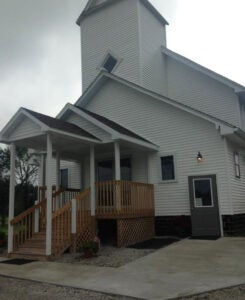
Granted, those numbers might strike some as representing a massive decline, but we’ve never been a mega-church kind of operation. These small congregations have always prided themselves as being small, intimate collectives of cousins-by-degree. The population in these rural counties has been relatively constant for so long, we see any fluctuation as seismic. Of the 40-plus members who attended with me throughout my childhood, most have simply passed on to the other side and their kids and grandkids have moved away.
To that extent I see a bit of irony here, because once upon a time, a young Darlington would have thought nothing of attending services with a handful of fellows hosted by Rev. Hodge in a one-room schoolhouse in this same county. His grandson and my great-great-uncle Cyrus Boyce was a full-time coal-mining farmer and volunteer lay minister who travelled about these very roads doing the same. My own father, Richard, is also a lay minister, and he’ll be listening to me speak on Sunday. The number in attendance will be comparable in size to many of those around here during the days when fields were plowed by horses.
And who knows, old Darlington and Cyrus may very well be coming to hear me each week and not sign their names to the registry.
The three P’s
Preachers, property, and politics weigh heavy into my thinking on this topic. Irrespective of whether episcopal or congregational, Catholic, Protestant, or even Muslim or Jew, these three P’s seem to affect membership numbers. And right now, rural America seems to be in a state of flux where those are concerned. Like any mathematical equation they work together, and U.S. churches appear to be short on preachers, heavy on property, and the politics are blowing like wheat chaff from the back end of a combine.
In theory, people identify with a particular faith and denomination, not the preacher. But let’s face it, that’s just not the case. Books fill libraries on the theology espoused by John Wesley (the Anglican priest from whom Methodism comes), John Calvin (the Roman Catholic priest who helped lead the Protestant Reformation), as well as 2,000 years of writings from the Orthodox and Catholic churches. But the average churchgoer probably couldn’t match even those two names out on a multiple-choice quiz. I don’t think that’s ever been any different in rural America.
Meanwhile, the preacher is the reason people come to, or leave, a church. Or in some cases, small family churches have been known to help a minister move down the road if they don’t feel he fits their congregation. According to a survey among ministers, 42 percent were thinking of quitting the profession in 2021, and 51 percent of those were from mainline denominations. Pre-COVID, ministers reported averaging 55 to 75 hours per week, with a good bit of that going to visitation of the sick and to weekly study meetings, not just sermon preparation.
So even in the best of circumstances, being a minister is a tough job and always has been. The result is an “empty pulpit” syndrome in many of these smaller congregations.
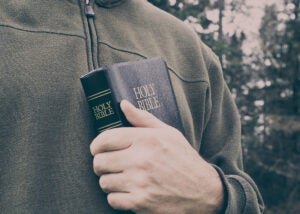
And small rural churches such as mine rely upon the tithings of a handful of families. We’re in no danger of paying the light bill, but according to Salary.com, in 2023 the average pastor salary in Indiana is $103,000. To say we’re not even close is an understatement. Our cluster of small rural churches average closer to $100 to $300 per week even. Again, that’s always been the case, hence our origins in homes and one-room schoolhouses attended by circuit-riding ministers.
We rural churchgoers might well be back in the old days with circuit riding lay speakers. Is our harvest over or has our planting just begun?
Much like small town doctors, lawyers, and accountants, whose offices used to dot the village square, the clergy are having a hard time keeping up with inflation on what the locals can afford. Meanwhile, larger churches in suburbia, or even larger churches nearby, are clearly able to hit those numbers.
And then there’s the property. If you belong to a church in rural America, you’ve certainly heard it before: “Why don’t you just close your church and join in with another?” That suggestion has been on the table since the 1800s and is the reason so many of these churches exist today. That’s how they themselves got started. It’s such a valid question it raises the hairs on every member’s neck. After all, the same people have been asked the same question about their farms for years, and the only reason they’re still family farmers is their family never sold the farm.
For most of us, these churches are not just houses of worship, but they’re an extension of our own families going back generations. Many members are descendants of the original landowners and still live nearby. The idea of closing the doors doesn’t just close the cover of their photo albums full of wedding pictures, but it raises the specter of a dilapidated building just down the road from their own home. Small churches that at one point had 100 members were built for that number, and even though the attendance has become a fraction of that, no one wants to close and go to another church where they don’t know the preacher.
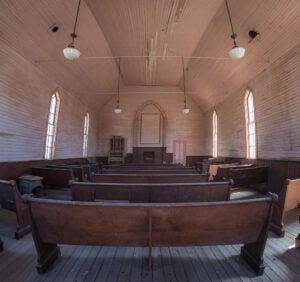
And then comes the politics. Whether the topic is marriage, the role of women in the clergy, the Second Amendment, or abortion, politics surrounds the issue from the secular media to the pews themselves. According to the Pew Research Center, 70 percent of adult Christians who were raised Christian but are now unaffiliated are Democrats or Democrat-leaning independents, compared with 43 percent of those who remained.
The Pew Center reports, “Some scholars argue that disaffiliation from Christianity is driven by an association between Christianity and political conservatism that has intensified in recent decades.” And yet, in my own local experience as a Red State resident, I’d have to say the opposite can also occur, as I’m watching dozens of my neighbors leave the UMC because they say it’s become too liberal.
This of course begs the question, are people developing their opinions based on what the preacher says, or do they choose the preacher who says what they want to hear? Do they belong to a particular religious denomination, or do they attend meetings with friends and family in a community building near them?
The answers are becoming clearer each week. Meanwhile, the ghosts of Darlington and Rev. Hedge tell me not to fret.
Why I’m optimistic
I’ve always been a fan of history, but in reading up on the topic here I’m reminded that John Wesley was once a priest for the Church of England, and John Calvin a Roman Catholic priest. Both broke away from large, well-established groups to lead discussions in rural areas with a few faithful followers.
The Brethren Churches are offshoots of the Mennonite and German Reformed traditions and took a staunch stance against slavery in 1821, banning slave owners as members in 1837. The issue of slavery split the Methodists too, with both southern and northern factions, and the same was true for the Baptists and Presbyterians. Again, many a large and well-established group has gone by the wayside as another was born, even as the EUB merged with the Methodists to become the UMC.
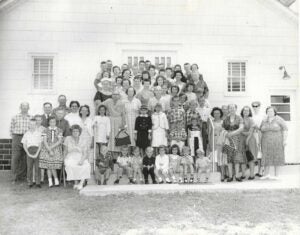
The history of the Catholic churches, both Roman and Orthodox, are epic, with nearly two millennia worth of such discussions. And at the end of the day it was as at the beginning, with handfuls of families and friends meeting in each other’s homes and small one-room churches, not unlike the Apostle Paul and Peter throughout Greece and Rome.
And let’s not forget, it all started 2,000 years ago with the son of a carpenter and his band of friends who made time for his teaching while not catching fish. Others would say no, it started about 3,800 years ago when a young man named Abram pioneered out of the city and into the wilderness to become Abraham.
I personally take a great deal of satisfaction, and feel it in my blood, as I help deliver messages not just at my own church, but a few others in our area now. I do think of Darlington and Cyrus, and as far as I’m concerned there are no lines between church, family, and our farm. It’s one continuum, even if that continuum is cyclical.
If the seeds of our heartland’s religious affiliations were planted in the 17th and 18th century, it might seem that the harvest has come and gone. But all available evidence dating back through the centuries would insist otherwise. There may only be a dozen bodies in the pews while I speak this Sunday, but I know a hundred ghosts will be there too.
Brian Boyce is an award-winning writer living on a farm in west-central Indiana. You can see more of his work at the Boyce Group homepage.



